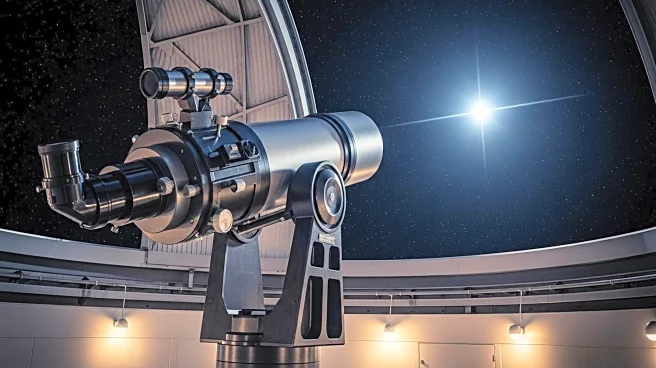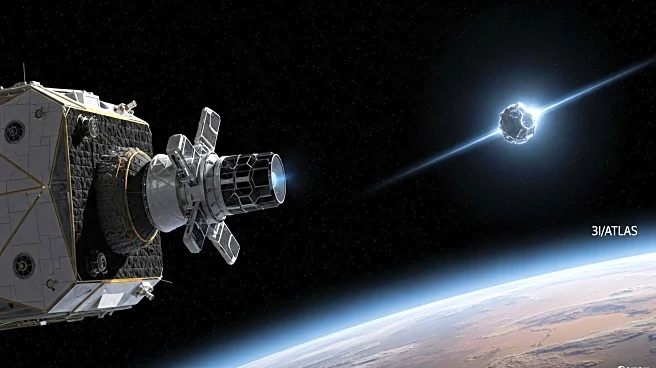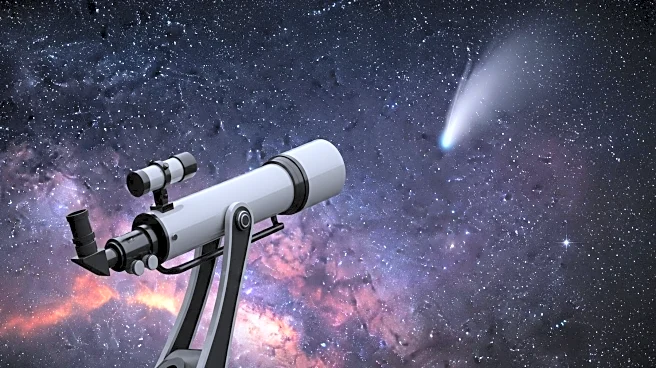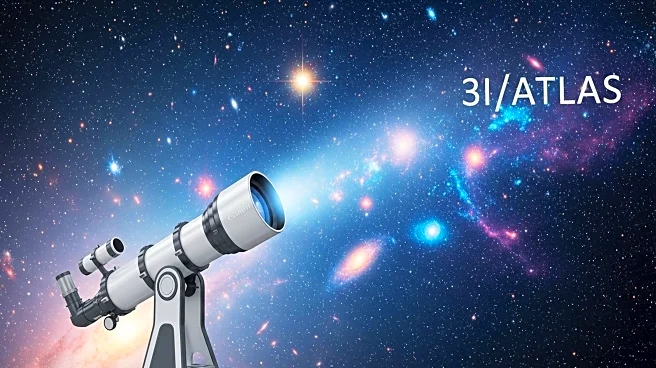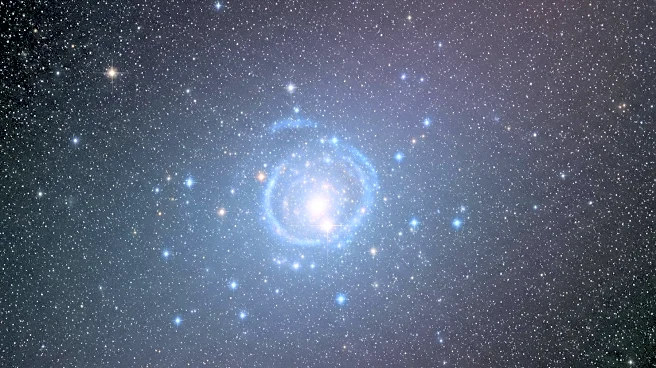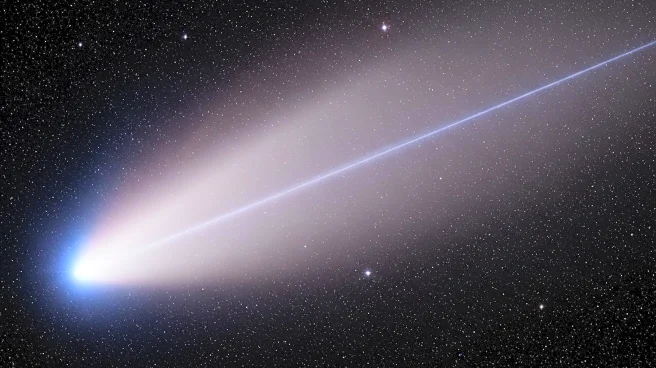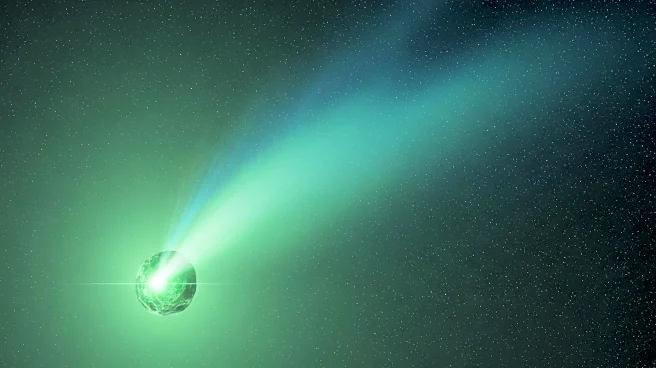What's Happening?
Recent observations from the Zwicky Transient Facility (ZTF) have sparked interest in the interstellar object 3I/ATLAS, suggesting its nucleus may be significantly larger than previously estimated. Initial data indicated a plateau in the object's reflective area, leading to speculation that its nucleus could be as large as 15 kilometers in diameter. This is a substantial increase from the earlier estimate of 5.6 kilometers. The observations, supported by images from the Hubble Space Telescope, show a brightening effect likely caused by mass loss and ice evaporation. The findings raise questions about the object's origin and trajectory, with some suggesting a technological or astrophysical influence.
Why It's Important?
The potential discovery of a larger-than-expected interstellar object like 3I/ATLAS could have significant implications for our understanding of the solar system and interstellar space. If confirmed, the size of 3I/ATLAS would challenge existing models of interstellar objects and their frequency. This could lead to new insights into the composition and behavior of such objects, influencing future astronomical research and exploration missions. The study of 3I/ATLAS also highlights the importance of advanced observational technologies in uncovering the mysteries of space.
What's Next?
Further observations are planned as 3I/ATLAS approaches Mars, where orbiters equipped with high-resolution cameras will provide more detailed images. These observations are expected to offer a clearer understanding of the object's size and composition, potentially confirming or refuting current hypotheses. The scientific community eagerly anticipates these findings, which could refine our knowledge of interstellar phenomena and inform future space exploration strategies.
